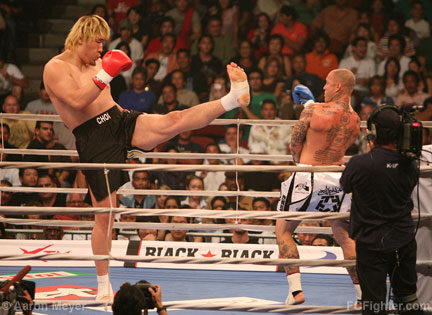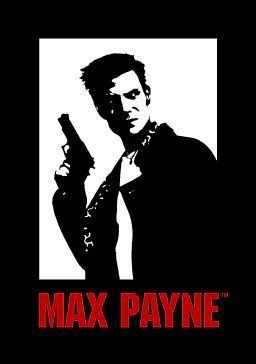Trending
Opinion: How will Project 2025 impact game developers?
The Heritage Foundation's manifesto for the possible next administration could do great harm to many, including large portions of the game development community.
Raw Aggression. A vital part of the fight, a driver for the motions or just a way to illustrate a character?

Yesterday I started this set of pieces by focusing on the concept of tension in a fight, and how we've rarely seen or felt it in well-made fighting games in the last 10 or 15 years.
Today, I want to look at raw aggression.

Raw Aggression
It hasn't really been touched upon in fight games in a meaningful way. It's usually a very arbitrary thing like having a double damage modifier activate when you're low on energy - Rage mode - or something that lets you mash buttons in sequence with more foregiveness - Street Fighter Alpha's Custom Combo.
Raw aggression is a fascinating sensation. It can be chaneled with rage as an underlaying base, or with an intense single-minded focus to complete a physical feat, like a long distance sprint.
It's when as humans, we very much embrace our animal side.
Raw Aggression
Raw aggression, as displayed by drunks
You don't really feel the pain of being hit. At least not while in the state. You will later. You're probably hitting harder than you ever have if you're completely letting go and genuinely trying to hurt the other guy. It's possessive. Like being drunk.
It's not very exacting or graceful. Technique is mostly out the window and many folks can end up looking like a drunk trying to swim through air. Or those two idiots above.
Controlled Aggression 
Hong Man Choi commits to a kick
At least until the fighter is overwhelmed, and the task is to mentally fight flight or fight reflexes over martial arts trained reflexes. Or worst case, struggle until you get your arse kicked and are knocked out on the floor, waiting for help.
It's a very focused state of mind, and its effectiveness lays on how you can focus on the task at hand and not the ego emotions that surround it. You feel more human-animal than human. More like an owner with a dog, than just the dog.
It's empowering, only as your focus is so intense and your senses and strength feels heightened. Provided you've removed yourself of fear. There's a lot more mental battle going on as you've not let go. But you're in control. Though there's still the risk that your play or move will be answered in a way you didn't expect...

Mirko Crocop gets knocked the f out
Have games ever tried to represent these types of aggression?
Very arbitrarily.
Samurai Shodown springs to mind for rage-based raw aggression with its rage bar. Your character glows red and their moves do extra damage. An added emphasis special effect - animation frame and sound delay after connection - is added. The powerbar explodes and ignites and if you finish the opponent while in this mode, the splash screen is red.
Some games embed it into hidden meta games in special moves, like KOF '96 Yamazaki's grab where hitting the button X times will have him start to shake more violently with each plateau of button presses, before he unleashes an astounding series of giant back-hand slaps to the opponent, the power of which is relative to how enraged / psychotic you make him.
Special moves across most games arguably replicate the feeling of controlled aggression. If they're performed with a complex motion, there's the feeling of focusing an idea, with a muscle-memory motion toward the opponent, at a specific time.
When you mentally don't have to commit to anything and button mash, the feeling isn't there. Perhaps this is why subconsciously, fighting game snobs don't treat Tekken or Soul Calibur as seriously as Virtua Fighter, or the 'classic' 2D fighters, since you can button mash to get lucky and heavily damage or win against expert players sometimes.
Also, the feeling of 'letting go' is yet to be replicated to my knowledge. The best representation I've played of that, is the Streetfighter Alpha Custom Combo, which allows the player to mash the buttons and spam moves which interupt frame animations so that they (almost) all connect in sequence. See here, in this youtube video.
The example above however, shows a player having mastered the system to connect 40 moves together, which then makes it focused aggression as opposed to that 'let go of everything' aggression.
Perhaps this is where the medium and audience is the barrier to the feeling? Or the presentation context? Fighting games have predominantly attracted skill-thrill players in my experience. Those who like to test their skills and improve them through play, failure and success. Those who demand flawless control, complete control and anything less is lower than dirt.
Perhaps rage is only ever considered alongside the characters who visually embody it and whether they would behave in that way? Since fighting games are often placed in a narrative context of tournaments, it's likely you'd be against trained martial artists, instead of those who lack self control, like drunk pub brawlers. This kind of thinking toward a fighting system then, would probably work more meaningfully in a game driven by a revenge-hungry, oppressed character.

Max Payne
While the feeling of letting go in a rageful state is one I'd like to experience in a game, I guess it's down to the appropriateness of the idea, relative to the character and situation. Even bar fights would need the fighters to have some level of self control...
...though across all cases of fighting, controlling a state of mind is universal and an interesting thing to explore mechanically. That's another post I have to write I think...

You won't like him when he's angry.
PART THREE TO COME AFTER THE WEEKEND, NEXT WEEK.
You May Also Like